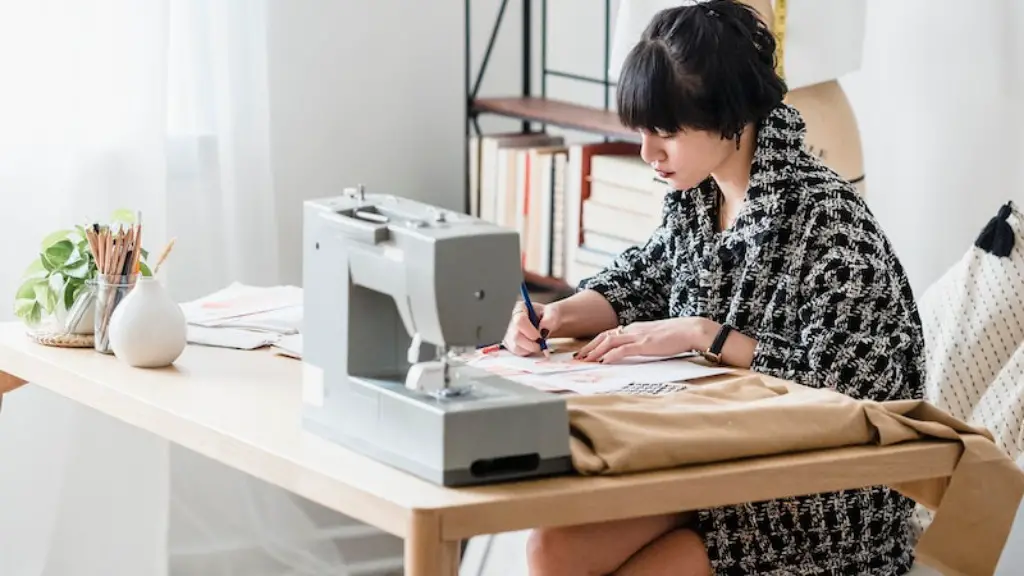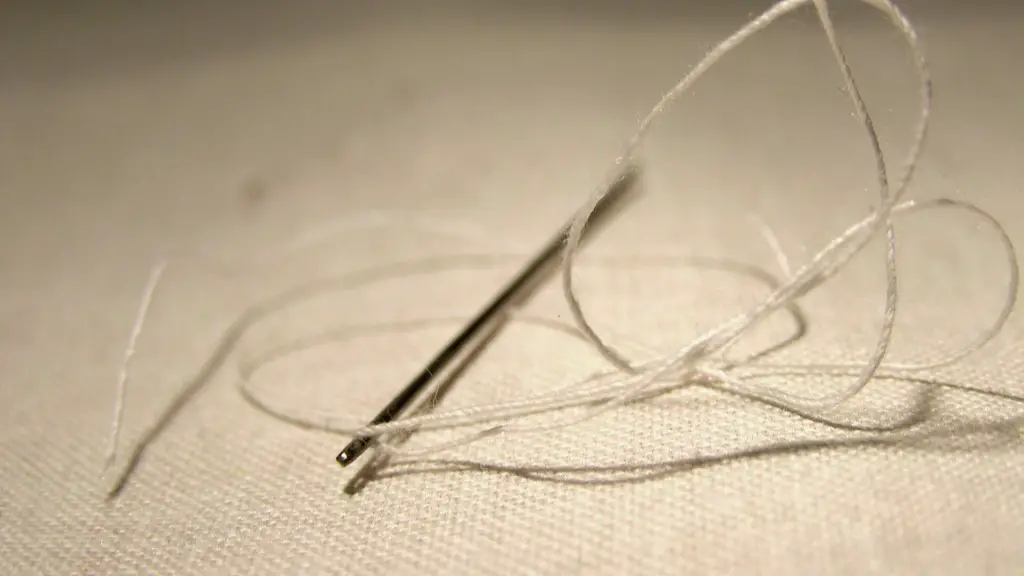Can you chain stitch with a regular sewing machine? The answer is no – a regular sewing machine cannot produce a chain stitch. In contrast, a serger machine or an overlock sewing machine is specifically designed to produce a chain stitch.
A chain stitch is created by looping a single thread back and forth around itself. This makes the stitch dense and strong, meaning it is perfect for finishing edges on fabrics. Chain stitching can be used to finish seams and hems, as well as to add decorative effects to clothing and fabric items.
The difference between a regular machine and a serger machine is mainly due to the differential feed that the serger has. This provides the machine with more control, enabling it to create detailed designs and finishes. Differences in the needle size and the number of threads used also contribute to the creation of a different type of stitch.
When a serger is used, a knife passes the thread through the fabric. This helps to prevent fraying and raveling of the fabric. The Knife also helps to prevent the thread from creating loops in the finished product.
When a regular sewing machine is used on knit fabrics, the results are not as good. Knits will often stretch and distort, resulting in a finished product that may be less than optimal. This is due to the limited control that the regular machine can have over the stitching process.
The best way to achieve a professional-looking chain stitch is to use a serger machine. This will enable you to produce accurate and detailed designs, and it will also ensure that the fabric is not distorted by the stitching.
Threads
Choosing the right thread and needle is essential when chain stitching. The thread should be strong and durable enough to hold the fabric together, while the needle should be the correct size for the material and the stitch. A larger needle will result in a larger stitch and can cause the fabric to distort. Conversely, a smaller needle will result in a smaller and tighter stitch, which may not hold the fabric together as well.
Another important factor to consider is the type of thread used. Some threads, such as polyester and nylon, are better for chain stitching than others. These threads will help to keep the stitching neat and secure, resulting in a better-looking end product.
It’s also important to use the correct tension when working with a serger. Too much tension can cause damage to the fabric, while too little tension will result in a sloppy looking stitch. When setting the tension, it’s important to make sure the tension is not too tight – if it is, it can cause the thread to break when the machine is running.
Before starting to sew, it’s important to practice stitching a few samples. This will ensure that the machine is set up correctly and that the stitching will be as neat and accurate as possible.
Conclusion
Creating a chain stitch with a regular sewing machine is not possible, as the machine is not designed to produce this type of stitch. The best way to achieve a professional-looking result is to use a serger machine, which is specifically designed to produce a chain stitch. Furthermore, it’s important to choose the right needles and thread, and to adjust the tension correctly. With the right equipment and a bit of practice, any aspiring seamstress or tailor can achieve beautiful and professionally finished results.
Materials
When selecting the right materials for chain stitching, it is essential to consider the type of fabric being used. Taking the time to choose the right type of fabric is invaluable when creating a professional-looking result. Different types of fabric require different types of stitching, as some fabrics can’t handle the strain of a chain stitch. For example, fabrics such as lycra or spandex need to be stitched using a zigzag stitch, rather than a chain stitch.
In addition to fabric, the type of thread and needle selected for chain stitching can also affect the quality of the end result. Choosing the right thread and needle for the material being used is crucial for achieving a neat, professional-looking stitch.
In some cases, it is also useful to use a stabilizer when chain stitching. Stabilizers can be used to prevent fabric from stretching or distorting while being stitched, thus ensuring a neat and accurate finish.
Finally, it is important to remember that chain stitching is not suitable for all fabrics. For some materials, such as knits and fine fabrics, it is better to use a regular, straight stitch. Therefore, it is essential to research and understand the requirements of the fabric before attempting to chain stitch it.
Tools
Using the right tools is essential to ensure a successful chain stitch. In addition to the regular sewing machine and the serger machine, additional tools may be required, depending on the type of projects being undertaken. These additional tools may include an overlock foot for the serger, tweezers or fabric snips, and basting or sewing tape.
When using a serger machine, it is also important to make sure that the blades are properly aligned. The blade should be parallel to the needle, as this will create a cleaner and neater stitch. Failing to do so can lead to misalignment of stitches, resulting in a less than desirable effect.
Before starting a project, it is important to ensure that all of the tools and materials required are present and accounted for. Making sure that all of the necessary supplies are available before starting to sew can prevent unnecessary problems and errors.
Techniques
There are different techniques used to produce a chain stitch. The most common technique is overcasting, which involves looping the thread around the edge of the fabric. This technique is typically used to secure edges and to help prevent fraying. It can also be used to create decorative effects, such as embroidery.
Another technique used for chain stitching is top stitching. This involves stitching along the edge of the fabric in a neat line. It is useful for creating a neat and professional looking edge, as well as to add decorative detailing. This technique is also useful for reinforcing seams and hems.
Finally, the last technique used for chain stitching is decorative stitching. This involves using the stitching to add different patterns or designs to the material being used. This can be a great way to add a unique touch to a project, such as a patchwork quilt or a handmade bag.
It is important to remember that all techniques should be practiced before attempting to create a finished product. Different techniques may require different settings on the machine, as well as different stitches and threads. As such, it is essential to familiarize oneself with the techniques before attempting to use them.





